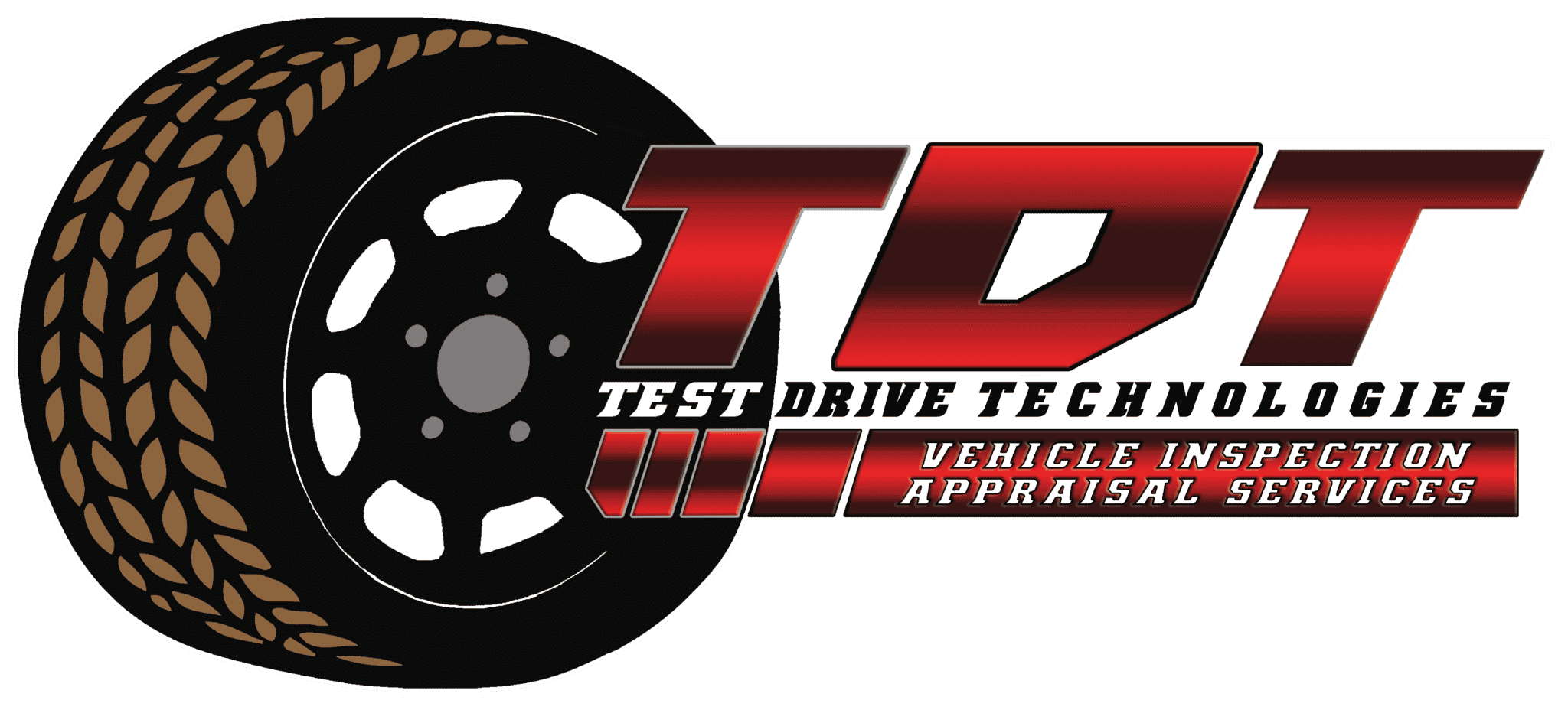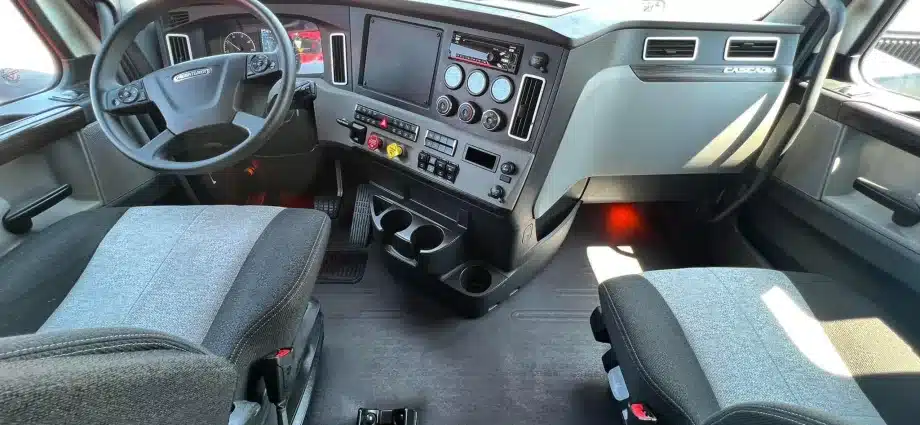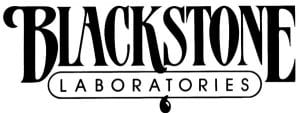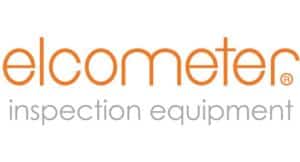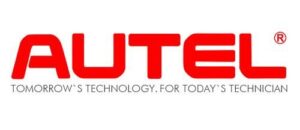Today’s modern commercial trucks have become complex electrical machines. Semi trucks, school buses, motor homes and construction equipment have evolved leaps and bounds over the last 10 years. Today’s commercial trucks have many of the same safety features as modern automobiles that are electronically controlled and require sophisticated diagnostic computers and laptops to ensure the electrical system is working properly on these big rigs.
Commercial truck engine controls encompass various systems and components to optimize engine performance, fuel efficiency, and emissions. Key elements include the Electronic Control Module (ECM) managing fuel injection, throttle control, Exhaust Gas Recirculation (EGR), Selective Catalytic Reduction (SCR), Variable Geometry Turbochargers (VGT), and Engine Brake (Jake Brake). These systems are electronically controlled to ensure efficient and compliant operation.
The emissions system in a commercial truck is controlled primarily by the Engine Control Module (ECM) or Engine Control Unit (ECU). The ECM monitors various engine parameters and communicates with sensors throughout the vehicle to ensure the emissions system operates effectively. By performing a diagnostic scan we can ensure that all the system sensors are operating properly and the system is health and in compliance with the EPA regulations.
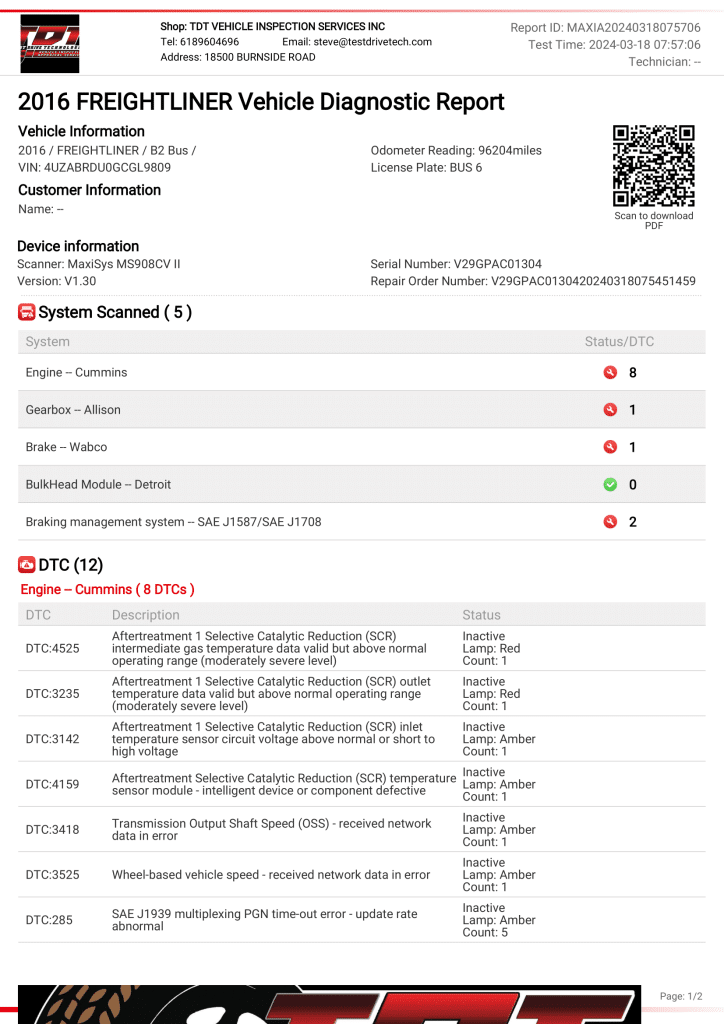
Electrically controlled commercial truck transmissions, also known as automated manual transmissions (AMTs), use electronic control systems to manage gear shifting and clutch operation. The system includes an Electronic Control Unit (ECU) for overall management, a Clutch Actuator for clutch engagement, and a Transmission Control Module (TCM) for gear selection. Shift actuators within the transmission handle gear changes based on signals from the TCM. These transmissions offer smoother shifting, improved fuel efficiency, and reduced driver fatigue compared to manual transmissions. We are able to monitor the transmission controller system during a test drive and ensure that all the proper parameters and shift points are operating as designed.
The semi truck ABS (Anti-lock Braking System) is a crucial safety feature designed to prevent wheels from locking up during braking, especially in emergency situations. This system operates through a series of components and processes. Wheel speed sensors located on each wheel monitor their individual speeds, sending this data to the Electronic Control Unit (ECU). The ECU analyzes these signals to detect any wheels that are on the verge of locking up. Once detected, the ECU controls modulator valves positioned in the brake lines of each wheel. These modulator valves rapidly adjust brake pressure to prevent wheel lockup while still allowing the driver to maintain steering control. By pulsating brake pressure, ABS ensures that the wheels maintain traction with the road surface, preventing skidding. This process is continuously monitored by the ABS system, which adjusts brake pressure as needed during braking. Overall, commercial truck ABS significantly enhances safety by enabling controlled braking and steering, particularly in critical braking scenarios. By performing a diagnostic scan and running a system test we can determine if the system is healthy or if there are other concerns such as bad wheel speed sensors or worse a bad control module in the system.
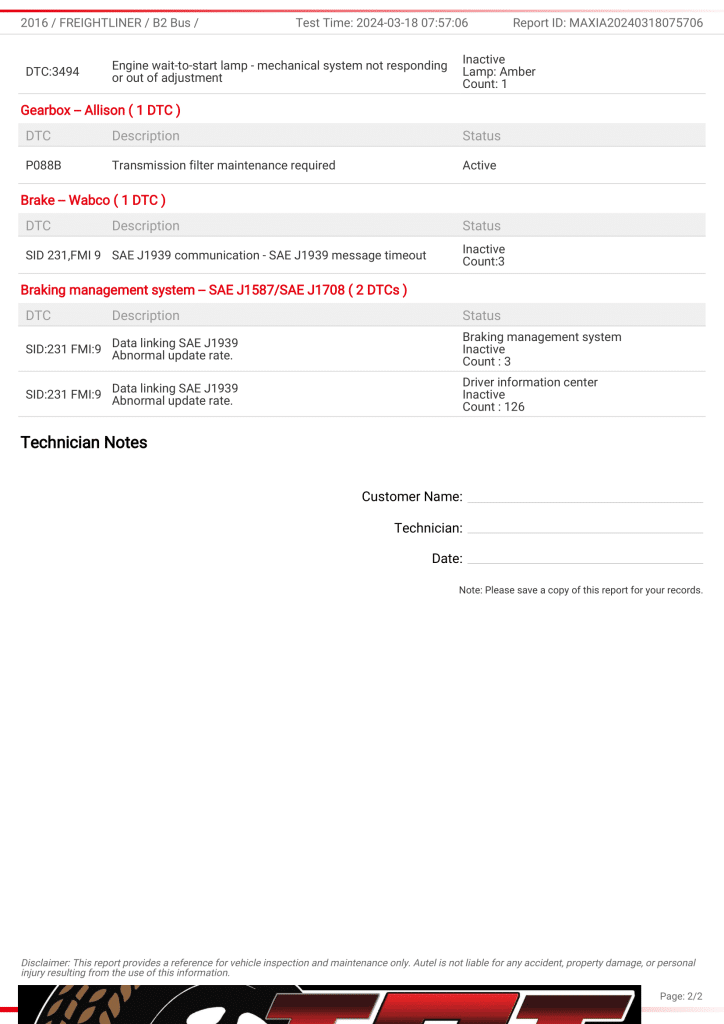
Electronically controlled suspension systems for commercial trucks utilize sensors, actuators, and an electronic control unit (ECU) to adjust suspension settings in real-time based on road conditions and vehicle dynamics. These systems offer various modes for different driving scenarios, adaptive damping for improved comfort, and may include active roll stabilization for enhanced stability during cornering. Integration with other vehicle control systems ensures a coordinated response to changing driving conditions, ultimately providing a smoother, safer, and more comfortable driving experience.
Electronically controlled airbag systems in commercial trucks use sensors to detect collision parameters, with an Electronic Control Unit (ECU) determining airbag deployment. Airbags deploy rapidly, offering varying deployment stages based on impact severity. Some systems integrate occupant detection for tailored protection. Overall, they enhance occupant safety by deploying airbags effectively in collisions. By performing a computerized diagnostic with the latest technology, we can examine the system to ensure the sensors and wiring and controller modules are functioning as designed.
Crash avoidance technology in commercial trucks incorporates various advanced safety features designed to prevent or mitigate collisions on the road. These features include collision warning systems that use radar, lidar, or cameras to detect obstacles and alert drivers to potential collisions. Automatic Emergency Braking (AEB) systems are also crucial, applying brakes automatically if a collision is imminent and the driver does not respond. Lane Departure Warning (LDW) and Lane Keeping Assist (LKA) systems help prevent unintended lane departures by alerting or assisting drivers. Blind Spot Detection systems monitor blind spots and warn of vehicles to prevent side-swipe collisions. Adaptive Cruise Control (ACC) adjusts speed to maintain safe following distances, while Electronic Stability Control (ESC) prevents skidding or loss of control. Additionally, driver fatigue monitoring systems detect signs of fatigue and provide alerts to drivers, promoting safe driving practices. Overall, these technologies aim to enhance safety by assisting drivers in avoiding collisions, improving awareness, and reducing accidents on the road. These systems use specially designed radar cameras and sensors throughout the truck in different locations. Our diagnostic software is able to scan and test these sensors and ensure the truck’s safety system is in safe and good working condition before you make your purchase.
When it comes to making a commercial truck purchase you want to know everything you can about the history of the truck and how it has been maintained. While repair and maintenance records are very helpful in proving that routine maintenance has been performed, that should not automatically give the truck a passing grade. As a truck buyer you want to know the actual internal conditions of the engine, transmission, gears and cooling system are in.
Oil sample analysis, also known as oil analysis or lubricant analysis, is a diagnostic technique used to assess the condition of lubricating oils in machinery and engines. The process begins with the collection of a small sample of oil from the machinery or engine, typically from a designated sampling port to ensure accuracy. This sample is then sent to a specialized laboratory equipped with analytical instruments and trained technicians. In the lab, various tests are conducted to analyze the physical and chemical properties of the oil, including viscosity, acidity, contamination levels, oxidation products, and additive depletion. Experienced analysts interpret the results, comparing them to established baseline values or industry standards to identify any abnormalities or potential issues. Based on the analysis, recommendations for maintenance or corrective actions are provided, which may include oil changes, part replacements, or adjustments to operating conditions. Overall, oil sample analysis offers benefits such as early detection of problems, optimized maintenance schedules, cost savings, and environmental benefits by ensuring reliable operation of machinery and engines while minimizing downtime and environmental impact.
By taking a 2 ounce sample of oil or coolant and sending it to a specialized laboratory for analysis, we are able to determine the different metals, debris and wear materials within the different components. With this scientific data and information, the different wear materials can tell us what parts inside the engine or transmission may be wearing prematurely or potentially even failing. Oil and coolant sample analysis can also spot conditions such as oil cooler gasket failures, head gasket failure, crankcase bearing wear, cam bearing wear and even fuel injector leakage. These three conditions are some of the top 10 causes of commercial truck failures.
If you are about to make a semi truck or commercial truck purchase and want to know what condition it is in before you finalize your purchase please complete the form on this page and send us your details and we will respond and get things set up for your inspection. We proudly serve the St. Louis, Springfield, Kansas City, Missouri, Chicago, Memphis and Nashville areas as well as all of Southern Illinois.
